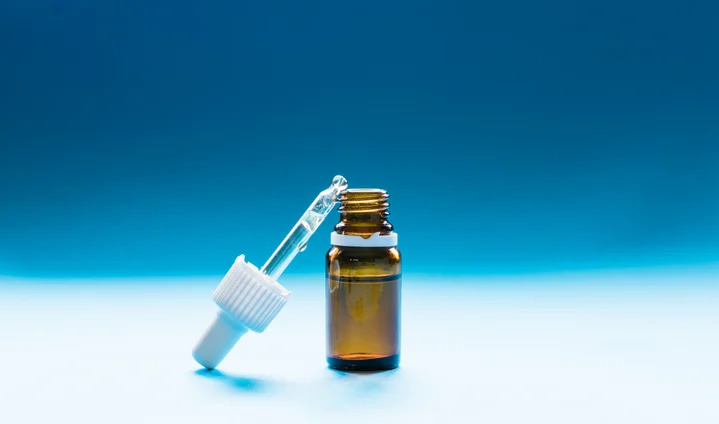
With the increasing market demand for products like CBD/THC oils, wellness drops and flavor enhancers, dropper pipettes are playing an increasingly important role in consumer applications. Wide user acceptance, ease of use, portability, and availability are common reasons why dropper pipettes are being used more and more across all markets. Given the nature of the products most suitable for pipette dispensing and the increasing eco-conscience demands of consumers, safety is playing a bigger role in packaging decisions.
With that in mind, we wanted to share some best practices for selecting a pipette that will satisfy your customers’ needs for safety and purity.
Having been in the dispensing business for over 30 years, we know that selecting a pipette system can be a daunting task. There are multiple options for each component of the system. We also know that safety requirements can be confusing and they constantly change. Given that, we wanted to share three steps you can take to make sure that your dropper pipette dispensing solution is as safe as possible.
- Choosing specific components based on your product and its purpose.
- Researching any packaging regulations that apply to your product.
- Selecting pure primary packaging options.
Before, we dig into these steps, let’s start with what a dropper pipette dispensing system is and why it’s so popular for dispensing liquid products.
What Are Dropper Pipettes?
An eye dropper, also known as a Pasteur pipette, or dropper, is a device consisting of a small tube with a vacuum bulb that is used to transfer liquids one drop at a time.
There are five main reasons why companies choose pipettes for dispensing liquid products – measured dosing, safety, purity, aesthetics, and consistent functionality.
- Measured dosing – Dropper pipettes are ideal when there is a need to dispense a small, controlled amount of liquid. Or, if you need to trust that a dosage is correct, dropper pipettes can offer more accurate measuring.
- Safety – With child-resistant and tamper-evident safety options, pipettes are a great option to protect consumers and thus your company.
- Purity – You should always feel confident about the quality of product you place on the shelves. Especially when it comes to oils and flavorings, consumers want to know what they are putting into or onto their bodies. They want pure products and the packaging needs to support that purity. As a note: Primary packing should come with documentation of the source materials to ensure they cannot react with the contents and cause contamination. We can provide that documentation for select products.
- Aesthetics – Aesthetics and functionality have long been key considerations for the primary packaging of serums, lotions and oils. Combined with the multitude of color and style options, dropper pipette systems can offer a packaging solution that is both functional and attractive.
- Consistent functionality – You want a dispensing system that consistently dispenses your product each and every time. A properly engineered and quality manufactured dropper pipette system, where the bulb, cap, pipette and bottle are all designed to work together, is the first step.
Now, let’s get back to the three steps you can take to improve product safety with your dropper pipette dispensing system.
Step One: Choosing Your Pipette Dispensing System Components
A dropper pipette dispensing system consists of 4 components – bulb, cap, pipette, and bottle. There are several options within each category that can affect the safety and consistent experience of your product. Note: For more information about each of these components, download our complimentary Dropper Pipette Buying Guide.
Bulbs
When deciding which bulb to use for your dropper pipette dispensing system, there are several considerations – material, style, capacity, and treatment. Functionality of the bulb, compatibility with the contents, and customer experience will drive your final decisions.
Caps
Caps used in a pipette dispensing system feature a hole in the top to allow for the bulb and pipette to be inserted. The cap you choose will depend on the neck of the bottle and the safety features needed. For example, the 18 DIN neck standard is the preferred bottle neck for essential oils.
There are four types of caps depending on your application and safety requirements.
- Regular
- Tamper-evident (fit dropper bottles with 18DIN neck)
- Child-resistant
- Child-resistant & Tamper-evident (fit dropper bottles with 18DIN neck)
We have more information on caps and child-resistant packaging regulations for you here.
Pipettes
Pipettes are available in glass or plastic and can be printed or marked with measurements for accurate dosing. Length of the pipette and tip style are the main considerations. Have a larger bottle? You need a longer pipette. Want a uniform drop size? Different tip styles can ensure drop consistency.
Bottles
The final component of the dropper pipette dispensing system is the bottle. The color of the bottle, the neck size, the capacity, and the material of the bottle all matter to offer your customer a consistent, aesthetic, and safe experience. Learn more about bottles and how materials and colors affect product purity and shelf life.
Step Two: Research Applicable Packaging Regulations
 Before making your pipette system component decisions, it’s important for you to do some research on any packaging requirements affecting your product. There are regulations required for certain liquids as noted by the Poison Prevention Packaging Act and administered by the Consumer Product Safety Commission (CPSC).
Before making your pipette system component decisions, it’s important for you to do some research on any packaging requirements affecting your product. There are regulations required for certain liquids as noted by the Poison Prevention Packaging Act and administered by the Consumer Product Safety Commission (CPSC).
Tamper-evident packaging and child-resistant packaging are mandated in certain scenarios. Having a child injured due to faulty packaging is a tragedy and a worst-case scenario for any company. Along with the physical harm caused by improper closures, this situation can lead to a loss of consumer confidence and even result in a lawsuit. It is important to understand child-resistant packaging rules so you can utilize appropriate and safe packaging for your customers.
Carow Packaging offers regular, push turn, child-resistant, tamper-evident, and child-resistant & tamper-evident caps. We have a line of child-resistant caps that have passed the CPCS compliant closures. If a vendor states their caps are child-resistant, make sure to ask for the documentation stating that the caps meet certification standards.
Also keep in mind that just because a protocol test has been passed by the closure manufacturer, the packaging may not be compliant when it reaches the end user. Why not? Ultimately it is the filling and capping processes that ensure a child-resistant cap and packaging is compliant. The protocol testing on the primary packaging demonstrates that the closure has the ability to pass the child-resistant packaging protocol test. However, this is only true if the closure has been used properly by the filling and bottling provider.
To help you, you can learn more about the CPSC guidelines and proactive steps you can take to maintain regulatory compliance in all steps of the packaging process here.
Step Three: Select Pure Primary Packaging)
Consumers want to know and control what they are putting into their body. They want pure products, but primary packaging plays an important role in the purity of a product, as well.
The glass from the bottle and markings on the pipettes could potentially contaminate your product. That’s why it’s so important to source your packaging products from a supplier who can provide you with the documentation on the source materials for all of the packaging components in your dropper pipette dispensing system. That way you can feel good about the purity of your products and providing your customers with the best product experience.
We hope these tips helped to educate you on how to design a dropper pipette dispensing system that is as safe as possible.
Want to learn more? Download our complimentary Dropper Pipette Buying Guide or talk through your product application needs with one of our Solution Specialists. Give us a call at 815-455-4600. We are happy to help.